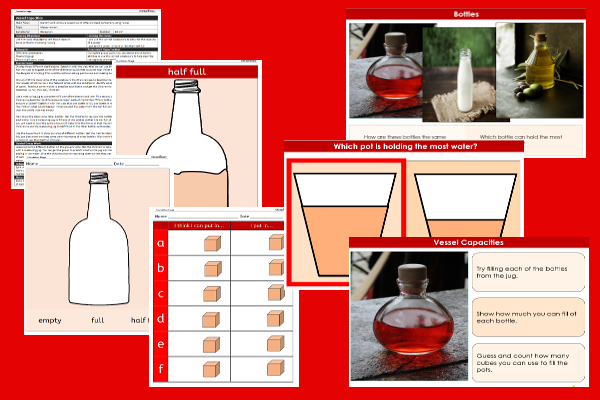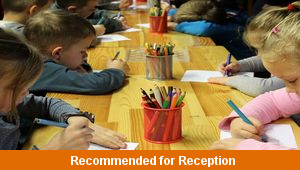Lesson Four – Vessel Capacities

This numeracy teaching pack for the Foundation Stage gets the children to identify and compare the capacities of different sized vessels and containers using special vocabulary and by counting cubes.
The class can estimate and then measure the capacity of a jug or pot and use words such a full, half-full and empty to describe the measured capacities.
Download this teaching pack including a lesson plan, classroom activities and an interactive presentation to teach the children to identify and compare the capacities of different sized vessels and containers using special vocabulary and by counting cubes
Activities in this teaching pack include a set of display posters to identify special vocabulary that can be used to describe the capacity of a container, a template to record the amount of water poured into a bottle and a worksheet to estimate and measure the amount of cubes that can be used to fill different sized pots.
The interactive presentation gets the children to identify and define some of the special vocabulary words that can be used to describe the capacity of a container or vessel and suggest how the capacities can be recorded using non-standard measurements.
This lesson is part of a numeracy scheme of work to get the children to practise and model different ways of measuring and comparing the length, height, volume, capacity and mass of different objects by using counting skills. There are teaching activities for shared learning, differentiated worksheets to support independent learning and interactive presentations to introduce concepts and key skills.
-

Halving Things
Explain and model how to find and record the halves of some of the different objects that can be used at home and in school
-

School Friends
Identify and learn classroom routines and organisation by exploring and describing information and likes and dislikes for each of their classmates
-

Classroom
Identify the location and function of different objects used in the classroom and explore how to formulate rules to manage the classroom safely
-

Shape Patterns
Identify, describe and compare the sequences of geometric shapes that have been used to create a range of different patterns
